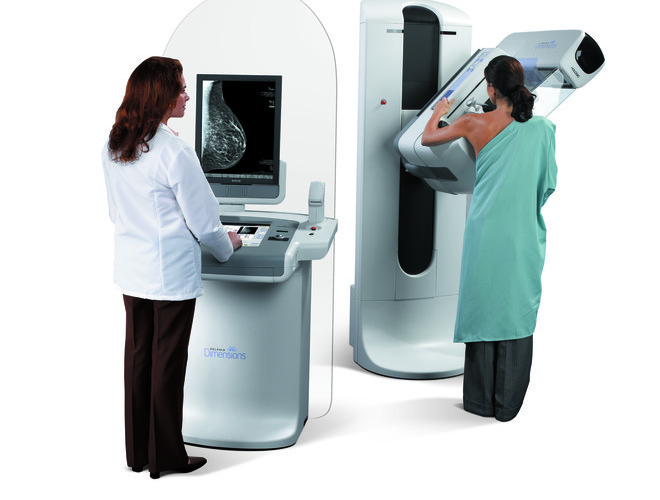Delaware’s first breast tomosynthesis technology provides heightened accuracy for breast cancer screening


The Breast Center at the Helen F. Graham Cancer Center is one of an elite group of institutions — and the first in Delaware — to offer tomosynthesis, the latest in breast cancer screening and diagnostic technology.
Breast tomosynthesis uses 3D technology to capture images of the breast at multiple angles during a short scan. The individual images are then reconstructed into extremely thin, high-resolution slices, which can be displayed individually or as a set.
Tomosynthesis eliminates the challenges associated with detecting cancer in overlapping structures in the breast, which is the primary drawback of conventional 2D analog and digital mammography. The technology also makes it easier to see lesions and localize structures in the breast.
“Tomosynthesis reflects our commitment to providing our patients with leading-edge technology,” says Nicholas J. Petrelli, M.D., Bank of America-endowed medical director at the Helen F. Graham Cancer Center. “Patients in Delaware have access to the latest in diagnostic tools and treatment close to home.”
“There is no perfect test for breast cancer and 15–30 percent of cancer is missed in traditional 2D mammograms,” says Jacqueline Napoletano, M.D., director of breast imaging at The Breast Center at the Graham Cancer Center. “Tomosynthesis is an exciting step forward in both detecting cancer and avoiding repeat mammograms for women.”
Because tomosynthesis provides a look inside the breast, it is easier to detect tumors at an early stage of development. In an analysis presented at the Radiological Society of North America conference in 2011, there was a relative increase of 47 percent in cancer detection using tomosynthesis compared to 2D mammography alone.
“It is remarkable the cancers you can see with tomo’ that you cannot see with traditional mammography,” Dr. Napoletano says.
Because tomosynthesis is more accurate, it also greatly reduces call backs for repeat mammograms.
Typically, 10 percent of women who have traditional mammograms are called back for a subsequent screening because the results of their first mammogram were uncertain. Preliminary results indicate tomosynthesis reduces callbacks by more than 40 percent.
Breast cancer is second only to lung cancer as the leading cause of cancer death among women. One in eight women will develop breast cancer during her lifetime, according to the American Cancer Society. If detected early, the five-year survival rate is 98 percent.